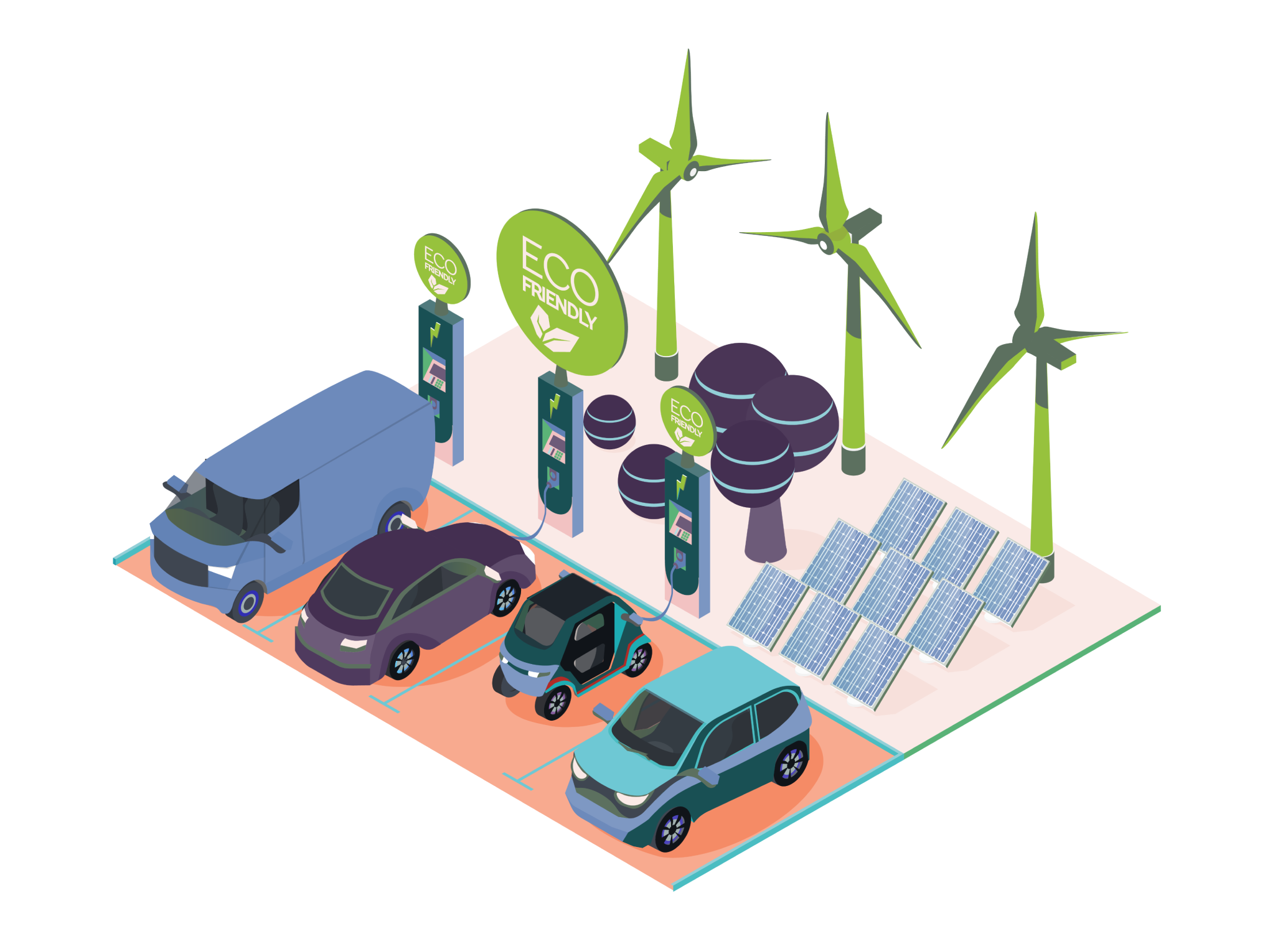Can charging stations in EU keep up with the increasing number of electric vehicles?

- MOBILITY
- E-MOBILITY
- MONTU
- EV
- ELECTRIC VEHICLES
- ELECTRIC CHARGING STATION
- ELECTRIC CHARGING
According to EEA (European Environment Agency), in 2019, 10% of vehicles sold in the European Union was electrically chargeable, which is nearly a double increase comparing to 2018. Despite the fact, that more and more people think environmentally consciously, the trend of electric charging stations development can’t fully satisfy the drivers’ needs yet.
Industry figures show that EU had 285 796 electric charging points in 2020, that is only a 20% increase in the newly implemented stations comparing to 2019. The European Union targets 1 million charging points by 2024, and 3 million by 2029. About 240 000 new charging points are needed yearly (4 600 new e-stations per week) to accomplish the target of EU and to keep up with the explosive growth of e-vehicles owned.
What challenges may cause low EV charging station numbers?
Mindset change is needed in most EU countries
Economic establishment has a huge impact on social responsibility, currently Germany and Norway are the leaders in the European Union electric vehicle segment. Germany leads the list with the highest number of newly deployed electric charging stations, while Norwegians buy more electric vehicles per capita in the EU. The European Union tends to promote its ambitions with several EU funds: e-mobility investments, individual e-vehicle purchases or e-fleet management solutions.
Drivers and fleet operators lack in real-time data
E-Mobility is still a phrase we’re continuously learning; therefore, it is a never-ending technological progress. Real-time information for drivers and for e-facility managers are essential parts of connectivity in mobility. Lack of information set limitations for both drivers and companies: which chargers on the drivers’ route are available, which stations are out of work or have long queues. When fleet operators fall out of real-time system due to non-synced data, companies lose the most important advantage they can provide for end users: the convenience.
Grape Solutions’s Montu provides unique EV software developments for admin platforms and mobile apps with custom modules, custom integrations and custom needs. Find more information in our recent EV case study.

Grid capacity, high installation cost
In order to change gasoline-powered national fleets into EVs, a major development in electricity grid is needed. It means that power generation capacity must increase to be able to host vehicles without straining the grid. Besides electric capacity, the installation cost of EV charging points is another reason why we have less stations than needed. Costs may range from $2,500, up to $35,800. Currently, charging station construction is paid by vehicle and energy companies and facility owners, such as managers of parking lots, garages, shopping centers, and retailers.
Misinformation in EV station pricing
Unlike gas stations, where the price is set per litre, EV charging can currently follow a wide range of different pricing schemes, which can lead to inconsistent pricing and driver confusion. Grape Solutions’s EV mobile app provides all the necessary information of the electric charging station to ensure user decision making before driving or on route.

Share this post on social media:
Posts by Tag
- IoT (17)
- Smart cities (16)
- E-mobility (14)
- Energy Management (10)
- Mobility (9)
- Software development (9)
- Marketing automation (6)
- RPA (6)
- Robotic Process Automation (6)
- electric vehicles (6)
- Internet of Things (5)
- IoT solution (5)
- Marketing software (5)
- Smart Building (5)
- Business Intelligence (4)
- Custom applications (4)
- IoT platform (4)
- Uipath (4)
- electric charging (4)
- IoT devices (3)
- Properties (3)
- AI (2)
- BI (2)
- Montu (2)
- Multi-device functionality (2)
- Omnichannel (2)
- RPA Budapest (2)
- Smart city (2)
- UX design (2)
- app development (2)
- artificial intelligence (2)
- crm (2)
- crm software (2)
- electric charging station (2)
- machine learning (2)
- marketing campaign (2)
- optima (2)
- API Testing (1)
- Agriculture (1)
- Automated Testing (1)
- BYOD (1)
- EV (1)
- Energy Communities (1)
- Event insights (1)
- Event report (1)
- Green IoT (1)
- HR (1)
- IT Outsourcing (1)
- ML (1)
- Power BI (1)
- Resource Management (1)
- Smart Home (1)
- Smart Office (1)
- TaaS (1)
- UX/UI Design (1)
- Xamarin (1)
- cloud (1)
- cloud computing (1)
- cross-selling (1)
- data driven marketing (1)
- digital twin (1)
- dynamic customer segmentation (1)
- esg (1)
- inbound marketing (1)
- industry 4.0 (1)
- onprem (1)
- onpremise (1)
- scalability (1)
- software robot (1)
- testing as a service (1)
- upselling (1)
Recent Posts
Read On

- MOBILITY
- E-MOBILITY
- ELECTRIC VEHICLES
- ELECTRIC CHARGING
Benefits of using electric mobility innovations
Every year thousands of cities and millions of European citizens celebrate mobility during the European Mobility Week to raise awareness for environmentally sustainable solutions. A wide range of e-mobility technologies were implemented in the last few years, anywhere you go, you probably meet with...

- E-MOBILITY
- ELECTRIC VEHICLES
- ELECTRIC CHARGING
- SMART CITIES
Europe is set to become the global electric vehicle market leader by 2030
Analysts foresee that European Union countries will overtake China and USA in case of the highest rate of selling electric vehicles in the next few years. The European Parliament and European Council set an agreement in June 2022 that all new cars registered in Europe will have zero-emission by...

- MOBILITY
- E-MOBILITY
- SMART CITIES
E-Mobility opportunities and challenges in the Energy & Utility sector
A large share of electric vehicles on Europe's roads in the future will have implications for the electricity generation and distribution infrastructure, which means energy and utility companies are forced to provide more resources. What's more, Europe's vehicle-emission regulations are forcing car...






